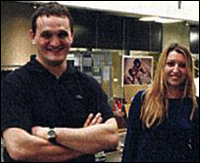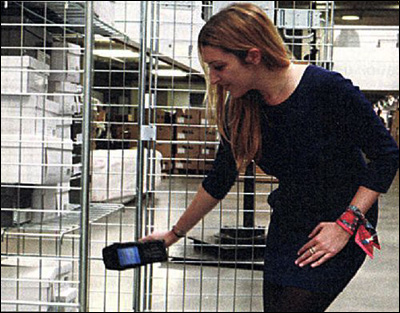Nov 12, 2013European online retailer Vente-privee.com sells a wide variety of goods through members-only flash sales, in which products are briefly offered at reduced rates. The nature of the business requires that the company move products, such as watches, clothing, electronics and footwear, quickly. This involves receiving samples at the firm's headquarters in La-Plaine-Saint-Denis, near Paris, preparing photographs, videos and other materials about the products, and then returning the samples to the suppliers while proceeding with a flash sale. Most samples remain onsite for only a few weeks before being returned to their respective vendors.
The company is now employing a radio frequency identification solution from French systems integrator Frequentiel that consists of Frequentiel's own software and Tageos RFID labels, to identify each tagged sample, as well as where it is currently located and where it has been. In that way, the retailer can spend less time searching for samples, ensuring that the items proceed through the appropriate processes and returning them to product suppliers.

"In the past four years, the number of samples has multiplied by six," says Lilian Mariani, Vente-privee.com's project director. Prior to installing an RFID solution, the company used a Microsoft Excel spreadsheet to chronicle the samples' movements through the facility, with staff members sharing the spreadsheet file with others via e-mail. If a sample was discovered to be missing, personnel sent e-mails attempting to locate it. "The main challenge was to know exactly the location of every sample at all times." Mariani says. Although the firm considered utilizing bar codes, it felt that the process of scanning each item's bar code would be too time-consuming, especially since each sample undergoes several procedures and would thus need to be scanned multiple times.
In 2011, Vente-privee.com began seeking automated ways in which to track the samples. The company also conducted feasibility studies and tests of three solutions, before selecting Frequentiel.
The Frequentiel software records each tagged sample's location via a combination of RFID reads and bar-code scans. When a sample enters the facility, an employee attaches a Tageos passive ultrahigh-frequency (UHF) label to that item and inputs a description of it into the Frequentiel software, residing on Vente-Privee.com's database. The description is linked to the unique ID number encoded to the Tageos label's built-in Alien Technology or NXP Semiconductors RFID chip. Initially, the samples are typically placed within a storage area on a shelf. As each sample is put away, a worker reads the RFID tag on that product via a handheld Psion Workabout Pro 3 RFID reader, and then scans the ID number printed on the shelf's bar-coded label in order to link the location with that particular item, according to Jeremie Scantamburlo, Tageos' marketing project manager.
When a sample is ready to be worn by a model, or to be photographed, a staff member proceeds to the location identified in the software. He or she can then use the RFID reader in Geiger counter mode to seek that specific item. The sample is moved to its new location, where the worker interrogates the tag once more and inputs the latest information, such as the department in which it is located and the process to be conducted. That data is then transmitted to the software via a Wi-Fi connection.

The software enables the company not only to track each sample's location, but also to view where that item has been. In that way, the staff can determine which processes have been completed for a particular sample, and whether a step has been missed prior to the item's return to the product supplier.
To date, the company has tagged hundreds of thousands of samples. With the solution, personnel carry approximately 100 handheld RFID readers. So far, Mariani reports, employees have been using the technology without experiencing any problems. "The solution was required to be easy to use for staff members not familiar with logistics processes," he states.
Since the solution was taken live in March 2012, Mariani says, it has helped to ensure that samples do not end up missing. The system has also reduced the time employees spend otherwise searching for missing items, he adds, though he declines to indicate the amount of savings resulting from the technology's use.

